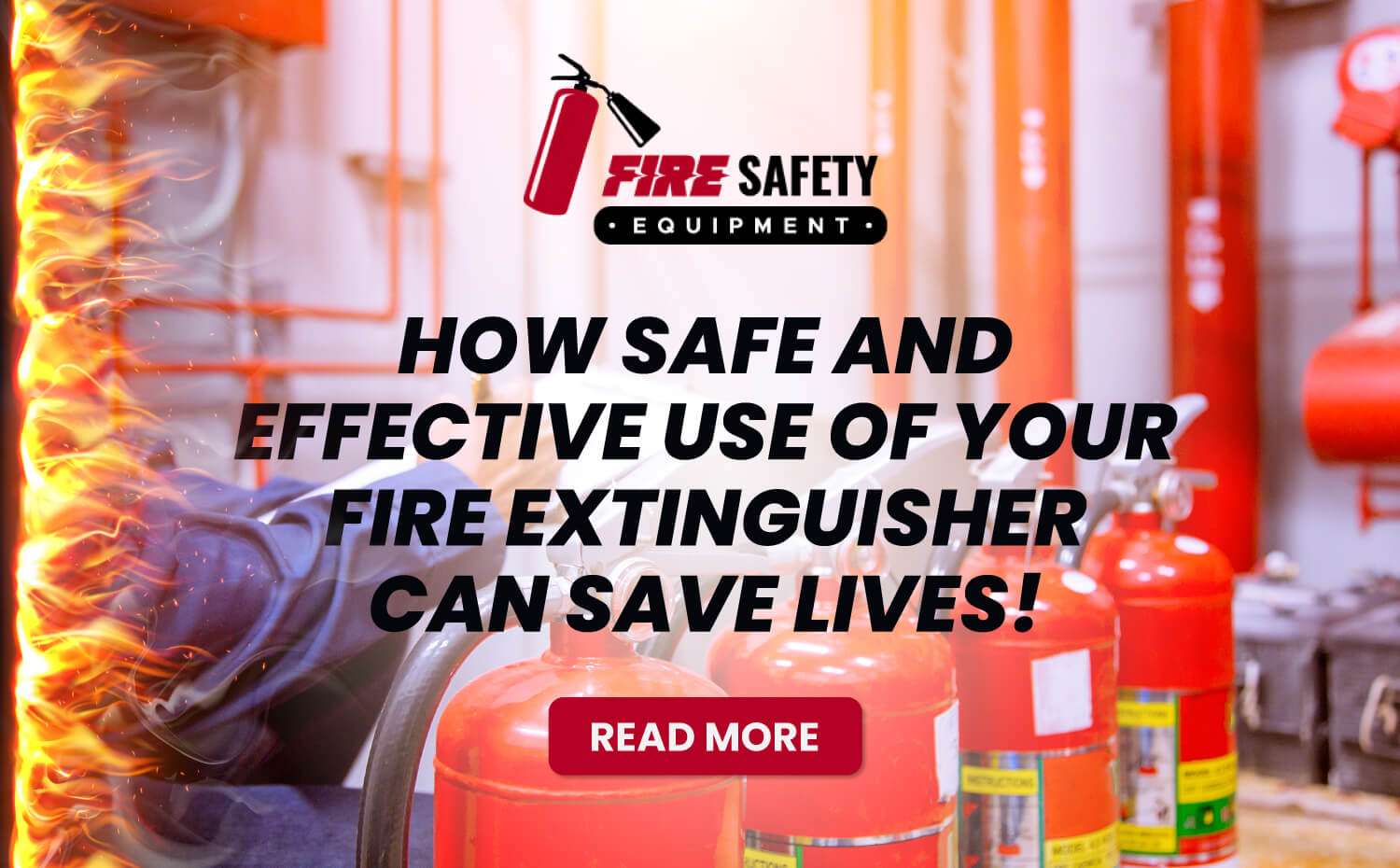How Safe and Effective Use of Your Fire Extinguisher Can Save Lives!
Posted by Fire Safety Equipment on 22nd Nov 2022
There's no doubt that fire extinguishers save lives. In fact, according to statistics, fire extinguishers are 95% effective in stopping small fires. Even better, fire extinguishers are a reasonably priced fire safety product for your office or home.
Unfortunately, while today's commercial and portable fire extinguishers are easy to use, not everyone knows how to use one safely. Even if you have a basic idea of how to use an extinguisher, there may be safety tips you never learned.
Will you know the fire safety essentials if you experience one of the nearly 400,000 building fires per year? If not, don't worry: we've compiled the best tips so you stay safe.
We've also included a list of the fire extinguisher classes so you know which is best for your situation (home, office, or factory).
Here's what you need to know.
In This Article
In this article, we will discuss the following:
- How to use a fire extinguisher (the P.A.S.S. method)
- Your FIRST priority in case of fire
- When it's not a good idea to use a fire extinguisher
- Fire extinguisher dos and don'ts
- Different types of fire extinguishers
Read on for the scoop on what to know before pulling that pin.
How to Use a Fire Extinguisher: The P.A.S.S. Method
The anagram PASS is the easiest way to remember how to use a fire extinguisher. (Most commercially available fire extinguishers work this way.)
PASS stands for:
- Pull the pin
- Aim at the base of the fire
- Squeeze the handle
- Sweep the nozzle back and forth
It may help to practice (without pulling the pin). During a fire emergency, even the calmest person can forget small details or might panic. Creating "muscle memory" (using an action repeatedly) will help if you experience a real fire.
Fire Extinguisher Dos and Don'ts
Most people have little trouble operating a fire extinguisher, especially if they remember the P.A.S.S. method. But if you want to stay safe, you'll need to keep the following in mind:
- DO stand 8-10 feet from the fire.
- DO keep a steady, back-and-forth sweeping motion while squeezing the handle.
- DO get quickly to fresh air and call 911 if you inhale fire extinguisher chemicals or get them on your skin.
- Do NOT get close to the fire while using an extinguisher. You are in danger from the fire, smoke, and the extinguisher's chemicals.
- Do NOT use the extinguisher in an area with little airflow. You may inhale dangerous chemicals.
- Do NOT practice using a fire extinguisher by pulling the pin and spraying it into the air or onto a surface. Most fire extinguishers contain chemicals that can be dangerous if inhaled or if they get into the skin or eyes. NEVER use a fire extinguisher unless it's an actual emergency.
Different Types of Fire Extinguishers
While you may think that any fire extinguisher will do in case of a fire, that's simply not true. It takes different chemicals to put out different types of fires. If you choose the wrong fire extinguisher, you may be at risk when using it.
Luckily, fire extinguishers are distinguishable by their class. There are four basic fire extinguisher types:
Fire Extinguisher Class A, B, and C
The first three classes –– A, B, and C –– are the ones most commonly used in the home and school or commercial non-factory buildings.
A: Ordinary combustibles, such as paper, wood, or cloth
B: Combustible and flammable liquids, including grease, gasoline, oil, or oil-based paints
C: Electrical equipment, such as tools and appliances
Fire Extinguisher Class D and K
Use these fire extinguisher types in factories and commercial or restaurant kitchens.
D: Flammable metals
K: Combustible vegetable and animal oils and fats and appliances
Important note: Some fire extinguishers can handle more than one fire class. For example, in many cases, you can use a Class K fire extinguisher on a Class A fire.
Consult a professional to help you pick a suitable fire extinguisher.
Before You Use a Fire Extinguisher
While we're happy to give the most up-to-date advice on safely using your fire extinguisher, there are a few things you need to know first.
According to experts, getting away from danger is your #1 priority in case of a building or house fire.
GET TO SAFETY First
- If there is doubt that the fire is too large or spreading fast for you to exit, or if you have no clear exit, do not attempt to extinguish a fire yourself.
- Get children and disabled individuals out of the building immediately.
- Call 911 or have someone else call 911.
- Pull the alarm if you are in a building with a fire alarm and it is within safe reach. You never know who else might still be in the building.
DO NOT Attempt to Put Out a Fire If:
- The fire is not minor and contained.
- The fire is spreading quickly.
- The fire is a grease, gasoline, paint, or chemical fire, and you are not sure you have the correct rating class fire extinguisher. (We'll discuss this in detail below.)
- The room is very smoky. (More than half of building fire deaths are from smoke inhalation.)
- Your only exit is blocked or may quickly become clogged.
Conclusion
Today's commercial and residential-grade fire extinguishers are easy to use. Keep the P.A.S.S. anagram in mind; it's simple to remember and includes safety (aiming low, for example).
Train your employees on what to do if a fire breaks out, and ensure they know how to use the fire extinguishers.
While we sincerely hope you never experience a home or office fire, preparation is essential. With the correct information and keeping calm, you can help prevent tragedy –– and everyone can stay safe.
